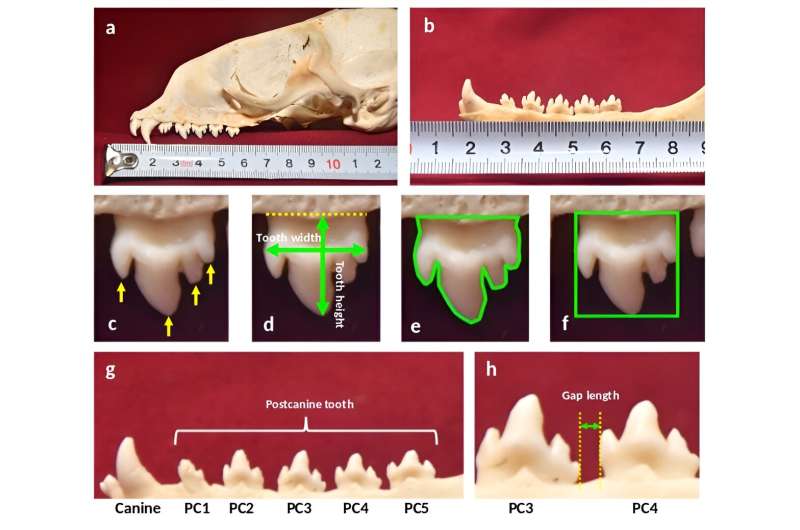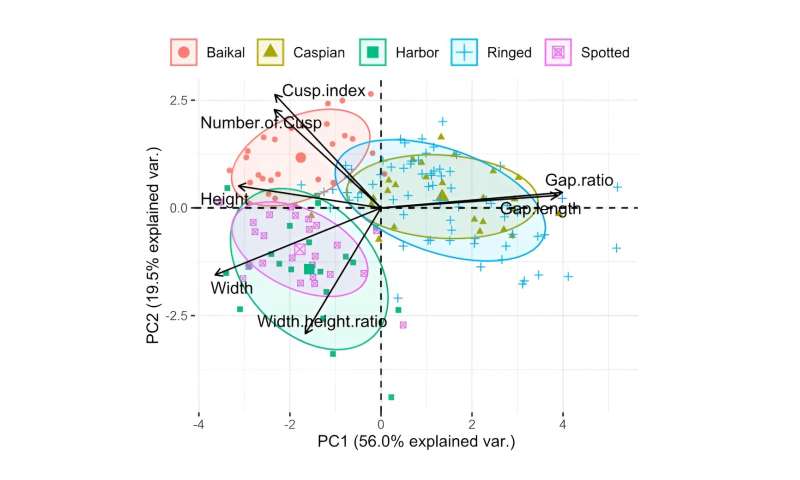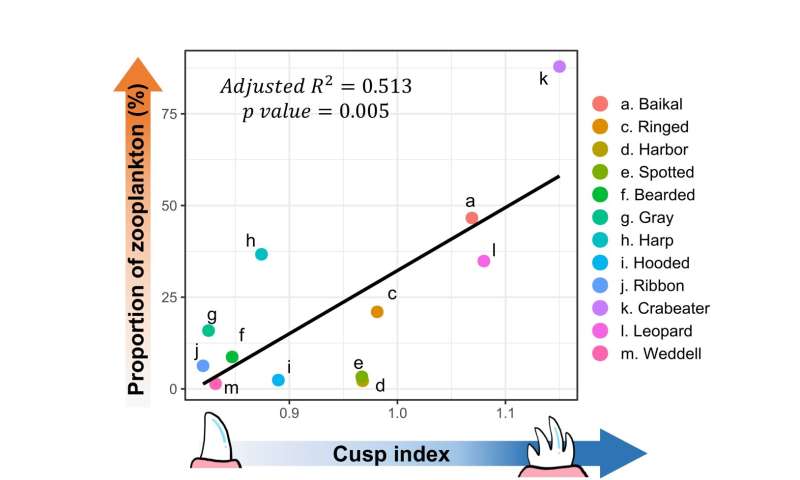This article has been reviewed according to Science X's editorial process and policies. Editors have highlighted the following attributes while ensuring the content's credibility:
fact-checked
peer-reviewed publication
proofread
Multi-cusped postcanine teeth associated with zooplankton feeding in phocid seals

The morphology of an animal's teeth often reflects its diet. A well-known example of a mammal that feeds in the water is the crabeater seal (Lobodon carcinophaga), which consumes large amounts of zooplankton.
Crabeater seals have complex, jagged teeth, which are believed to function as a sieve to retain krill in their mouths and filter it from seawater. Furthermore, recent studies have shown that the Baikal seal (Pusa sibirica) also preys on large quantities of zooplankton and possesses distinctive jagged teeth.
Thus, while behavioral observations and tooth morphology studies suggest a connection between tooth structure and zooplankton predation, no studies have quantitatively demonstrated this link or revealed a consistent pattern across seal species.
In a study, published in Marine Ecology Progress Series, researchers quantified tooth morphology, including jaggedness, using skeletal specimens of 13 species of seals from the collection of the National Museum of Nature and Science, focusing mainly on Baikal seals and their relatives. They examined the relationship between tooth morphology and zooplankton prey consumption. Baikal seals, known to consume large amounts of zooplankton, exhibited a unique tooth morphology compared to closely related species.
-

Result of principal component analysis (PCA) on tooth morphology in Baikal seals and its relative species. Horizontal axis represents principal component 1 and vertical axis represents principal component 2. Ellipses represent 68% credible interval for each species (identified by different colors and symbols). Calculated mean values of each group are shown as larger symbols. Principal component loadings of each variable are represented by arrows. Credit: Ishihara U, Miyazaki N, Yurkowski DJ, Watanabe YY (2024) Multi-cusped postcanine teeth are associated with zooplankton feeding in phocid seals. Mar Ecol Prog Ser 729:233-245. 10.3354/meps14509 -

The horizontal axis represents cusp index, an index for cusp development, and the vertical axis represents the proportion of zooplankton in each seal's diet. Credit: Ishihara U, Miyazaki N, Yurkowski DJ, Watanabe YY (2024) Multi-cusped postcanine teeth are associated with zooplankton feeding in phocid seals. Mar Ecol Prog Ser 729:233-245. 10.3354/meps14509
The researchers say their findings suggest that the degree of jaggedness in teeth correlates with the amount of zooplankton preyed upon, a trend observed across the entire seal family. These results indicate that the functional role of jagged teeth as a sieve is not exclusive to crabeater seals but is common among many seals that feed on zooplankton.
In the future, they aim to investigate how this tooth morphology influences mouth movements and overall body movements, and whether predation efficiency differs between fish-eating and zooplankton-eating seals with jagged teeth.
More information: U Ishihara et al, Multi-cusped postcanine teeth are associated with zooplankton feeding in phocid seals, Marine Ecology Progress Series (2024). DOI: 10.3354/meps14509
Journal information: Marine Ecology Progress Series
Provided by The Graduate University for Advanced Studies, SOKENDAI




















